How can I update the PinInput Boxes with input from the on-screen keyboard? From what I understand, whenever there's a state change, the widget will be rebuild. Hence, from below, what I did was updating the text whenever the on-screen keyboard detects tap. Then since the state is changed, I assumed it will rebuild all the widget which include the PinInput widget, and this is true since I tested the text whenever there's changes. I then did _pinPutController.text = text; to change the input of PinInput, however it is not working.
When I hardcode _pinPutController.text = '123', it works. So the problem is that it is not rebuilding. Am I understanding this correctly? How can I achieve what I wanted?
import 'package:flutter/material.dart';
import 'package:numeric_keyboard/numeric_keyboard.dart';
import 'package:pinput/pin_put/pin_put.dart';
import '../../../../constants.dart';
import '../../../../size_config.dart';
class InputForm extends StatefulWidget {
@override
_InputFormState createState() => _InputFormState();
}
class _InputFormState extends State<InputForm> {
String text = '';
@override
Widget build(BuildContext context) {
return Column(
children: [
PinInput(text: text),
NumericKeyboard(
onKeyboardTap: (value) {
setState(() {
text += value;
});
},
textColor: Colors.red,
rightButtonFn: () {
setState(() {
text = text.substring(0, text.length - 1);
});
},
rightIcon: Icon(
Icons.backspace,
color: Colors.red,
),
mainAxisAlignment: MainAxisAlignment.spaceEvenly),
],
);
}
}
class PinInput extends StatelessWidget {
const PinInput({
Key key,
this.text,
}) : super(key: key);
final String text;
@override
Widget build(BuildContext context) {
final size = getProportionateScreenHeight(60);
final TextEditingController _pinPutController = TextEditingController();
final FocusNode _pinPutFocusNode = FocusNode();
_pinPutFocusNode.unfocus();
print(text);
_pinPutController.text = text;
return PinPut(
fieldsCount: 4,
onSubmit: (String pin) => {},
focusNode: _pinPutFocusNode,
controller: _pinPutController,
preFilledWidget: Align(
alignment: Alignment.bottomCenter,
child: Divider(
color: kPrimaryColor,
thickness: 2.5,
indent: 7.5,
endIndent: 7.5,
),
),
textStyle: TextStyle(
fontSize: getProportionateScreenHeight(24),
),
eachFieldPadding: EdgeInsets.all(
getProportionateScreenHeight(10),
),
eachFieldMargin: EdgeInsets.all(
getProportionateScreenWidth(5),
),
eachFieldHeight: size,
eachFieldWidth: size,
submittedFieldDecoration: boxDecoration(),
selectedFieldDecoration: boxDecoration(),
followingFieldDecoration: boxDecoration(),
inputDecoration: InputDecoration(
border: InputBorder.none,
focusedBorder: InputBorder.none,
enabledBorder: InputBorder.none,
counterText: '',
),
withCursor: true,
pinAnimationType: PinAnimationType.scale,
animationDuration: kAnimationDuration,
);
}
BoxDecoration boxDecoration() {
return BoxDecoration(
color: Colors.white,
shape: BoxShape.rectangle,
borderRadius: BorderRadius.circular(
getProportionateScreenWidth(10),
),
);
}
}
